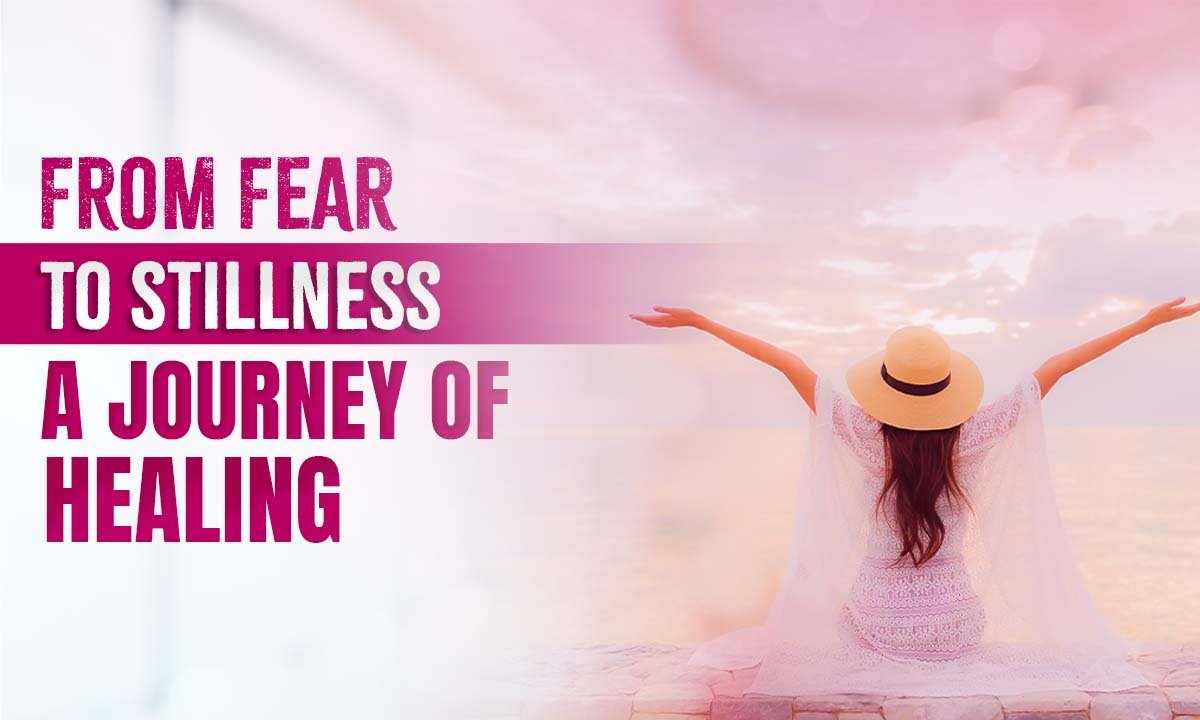
From Fear to Stillness – A Journey of Healing
A very natural emotion common to humans globally is fear. As a consequence of fear, one might feel increased heartbeat, adrenaline rush and changes in blood pressure. Excessive fear that is not managed properly can be life-threatening and paralysing. Mental health disorders such as Specific Phobia and Generalised Anxiety Disorder are often associated with the feeling of fear.
Understanding Fear
A threat in the external environment can lead to a feeling of fear in an individual. Many theories describe fear as a basic biological human emotion. For ages, the emotion of fear has been felt by individuals, and its impact can be observed in many different ways.
The Roots of Fear
A commonly observed function of fear is said to be helping in survival. There can be a vast range of stimuli that can lead to the feeling of fear. Here are some of the many ways in which fear can be learnt:
- Social Observation
- Verbal Instruction
- Classical Conditioning
- Instrumental Conditioning
- Contextual Fear Conditioning
How Fear Affects Mind and Body
Fear may impact the mind and body in the following ways:
- Dryness of mouth
- Shivering
- Decreased hunger
- Feeling confused
- Changes in body weight
Common Patterns of Fear in Daily Life
- Children might be fearful about examinations, disappointing parents, losing games, competition with peers, etc.
- Young adults may experience fear of finding a job, difficulty in a romantic relationship, transitioning from student to professional life, etc.
- During middle adulthood, the fears may be regarding parents’ health, financial fears, children’s future, etc.
- During late adulthood fear regarding death, health and family's wellbeing may increase.
Discovering the Power of Stillness
Amidst the chaos, one can try to find calmness through the power of stillness. There are a lot of studies being conducted to emphasise the power of stillness in today’s day and age.
What Stillness Really Means
- Cocooning Stillness
This involves the use of headphones or other sound applications to create a cocoon-like environment for experiencing stillness. - Immersive Stillness
Immersive stillness can be described as being in a natural environment and connecting with the same.
The Connection Between Stillness and Healing
Both types of stillness, cocooning and immersive, can offer an individual space to heal and feel relaxed amidst the chaos of daily life hassles. Healing can be through many different ways, and you can speak with a mental health professional to better understand how stillness can contribute towards your healing journey.
The Healing Journey
To recover from mental illness, one can step on the healing journey, and then mental health concerns such as anxiety and depression can be overcome.
Breaking Through Fear Step by Step
- Begin your mental wellness journey by acknowledging your concerns.
- Gradually create a space of acceptance with the help of the right professionals.
- Celebrate your efforts and all the wins in this mental health journey.
Tools and Practices That Support Healing
- Seeking regular professional support.
- Engaging in meditation practice daily.
- Exploring art, music and dance for coping.
- Practising breathwork and yoga for calmness.
- Gratitude journaling and affirmations.
Moments of Setback and How One Can Overcome Them
The journey of healing may have some points when one feels stuck. For example, despite making every possible effort for the management of stress, if some new unpleasant change in the environment occurs, it can be perceived as an obstacle.
You can seek support from a therapist and a psychiatrist to better navigate your journey from there. Practising grounding techniques and reminding oneself that the healing journey is not necessarily linear can also be helpful. If needed, one can also explore the coping strategies that are working well and ones that are not helpful; accordingly, one can move ahead.
Lessons Learned on the Path
A healing journey can itself teach many lessons. One learns to make informed choices about the treatment process, have trust in one’s abilities and learn more about one’s support system.
Why Fear Isn’t the Enemy
One might call fear an uncomfortable and disturbing experience. It can be described as an unwanted threat, for instance –
- Fear of failing in an exam
- Fear of losing one’s job
At the same time, a lot of time, this uncomfortable feeling can encourage one to take necessary steps to achieve one’s goals. For example, because of fear of failing in an exam, the student studies well, and fear of losing a job can motivate one to work hard.
Thus, if managed to an optimal level, fear can also turn out to be helpful. At the same time, excessive and prolonged fear can lead to a lot of psychological disorders.
How Stillness Creates Space for Growth
- It can be soothing for oneself
- It can offer an opportunity to pause and reflect
- It can allow creating a connection with oneself and the environment
Advice for Others Seeking Healing
To all those who are just beginning their mental health healing journey, here are some suggestions that can come in handy while you walk on this insightful path:
- Be patient with yourself
- Be honest with yourself
- Be honest with your support system
Conclusion
Take control of your life today by seeking support at our female-centric mental health facility, Athena OKAS in Gurgaon. A lot of females struggle with mental health concerns such as management of stress, Generalised Anxiety Disorder and Post-Traumatic Stress Disorder. We have specially designed this centre to offer personalised support to those women.
If you have a query regarding our services, please feel free to call us at +91 9289730444 or email us your concerns at customercare@athenabhs.com.